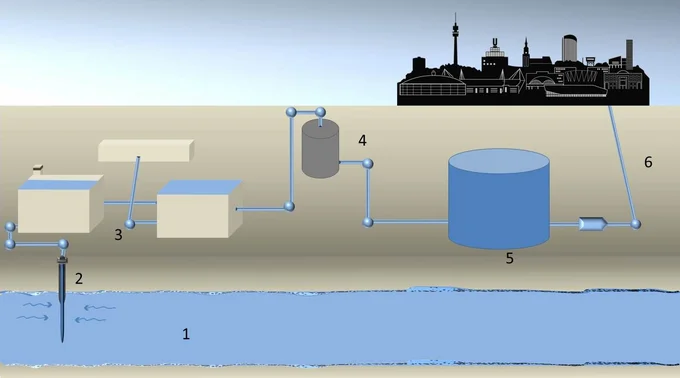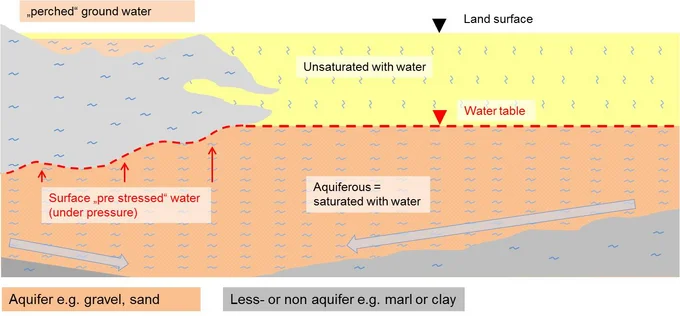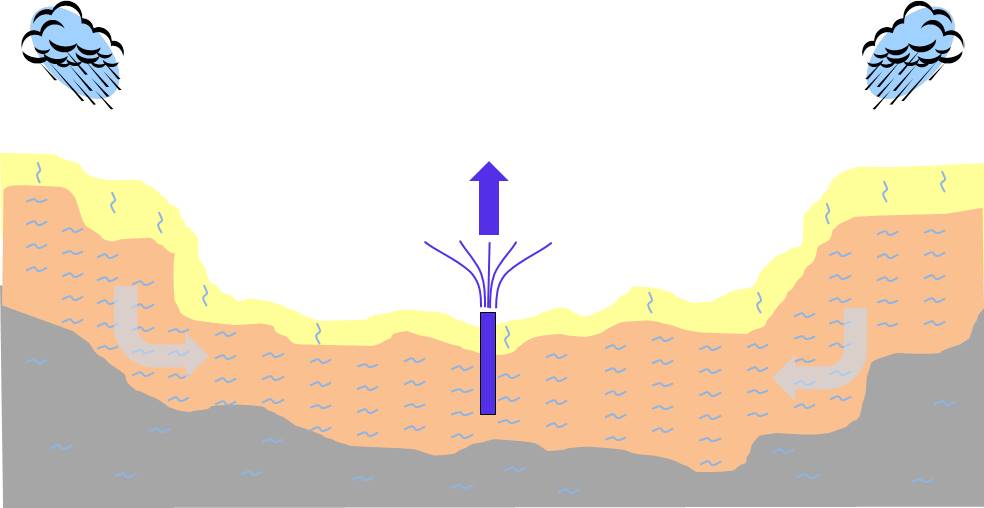Well construction Well construction basics
"Well" is the name for a large number of water-donating objects. Often, the sources that come to light are referred to as "wells". The name “well" or "fountain” also includes the monumental facilities such as ornamental fountains, fountains and waterworks. Wells in the technical sense (also called ordinary wells) are drilled in rock or loose rock terrains and normally lined with pipes.
Introduction
"Well" is the name for a large number of water-donating objects. Often, the sources that come to light are referred to as "wells". The name “well" or "fountain” also includes the monumental facilities such as ornamental fountains, fountains and waterworks. Wells in the technical sense (also called ordinary wells) are drilled in rock or loose rock terrains and normally lined with pipes.
Well construction is one of the most important pillars to ensure access to water resources. As shown in the “Basic knowledge – well construction”, in many countries – including Germany, the vast amount of raw water obtained from wells.
It is not possible to build a well in the usual extent without the necessary filter gravel (for example AQUAGRAN®).
The conditions under which wells have to be built are very different. In addition to the basic presence of suitable aquifers, an important parameter is the exact knowledge of the ground. For example, in the north of Germany are large areas with sand bottom, whereas in the south drillings in solid rock have to be carried out often (loose or hard rock drilling). The yield and the number of wells per area also play a role.
The solutions are as diverse as the task. This text is intended to provide a basic overview of well construction.
Principles of terrain
In the following, the basic conditions should be considered. Fig. 7 shows a section through a fictitious surface. Basically all geological formations are constructed in a similar way, but in practice they are often much more complex because there are several aquifers at different levels, and the distortions are rarely as simple as in principle.
Under almost every terrain on earth is groundwater. The - decisive - difference is the depth in which the groundwater-bearing layer is located. E.g. in Africa directly under the Sahara were found water reserves in huge extent of excellent quality. These deposits are, however, in more than 1,000 m depth, so it is technical extremely complex (but not impossible!!!) to make them usable.
The water which normally comes from precipitation passes through the overlying top layer and collects in the water collects aquifer. The groundwater conductors often consist of sand or gravel. In all formations are inclusions, which lead water scarcely or not at all. These consist may be of clay or marl, but also rock formations are possible.
The quality of the groundwater is usually the better the deeper it is found. This can be explained by the longer "natural" filter distance it has passed through. Of course, the entries on the surface also play a large role (e.g., agricultural fertilization).
Depending on terrain, the ground water has a flow direction. The flow direction and flow velocities depend on the quality of the groundwater conductor and the geological conditions. In addition, the amount of groundwater available is decisive. All parameters together have an influence on how large a well can be dimensioned at all (or how many wells can be in a given area or - in case of a desired groundwater reduction- have to be).
Under certain circumstances, the groundwater conductor has such high differences in altitude that the ground water exits by itself. If this happens naturally, this is usually called a spring. In wells, these wells are called artesian wells (see Fig. 3 Principle artesian well).
Classification of wells
Technical wells can be divided into ordinary wells and artesian wells (see Fig. 3). Normally they are also called deep wells. In this text the near-surface – so called fountains (for example, dug wells) are not dealt with here, since these are not relevant for the drinking water supply due to hygienic concerns.
Deep wells are usually created by drilling. Often the applications are classified as follows:
Monitoring wells (monitoring of the condition / groundwater level)
- Water supply well (public water supply / industry)
- Irrigation fountain (agriculture)
- Fire extinguishing fountain
- Garden wells
- Conveying and swallowing wells (e.g., geothermal energy, groundwater lowering)
In the following, the fundamentals of well construction will be illuminated.




